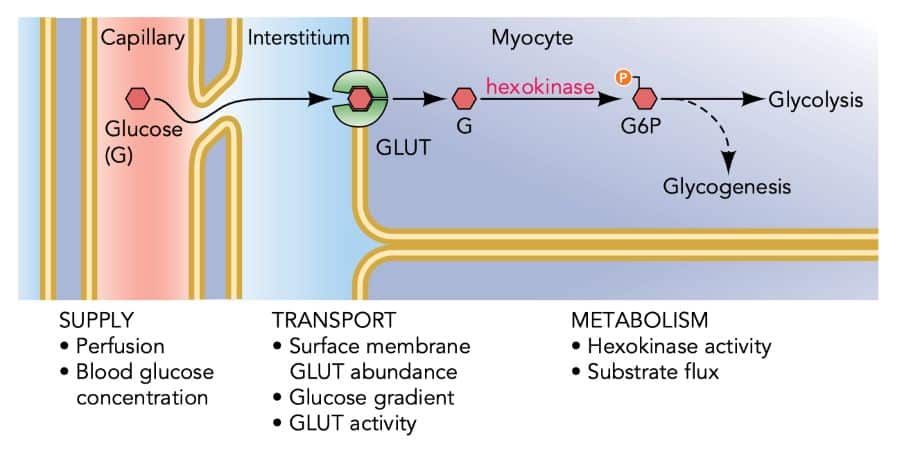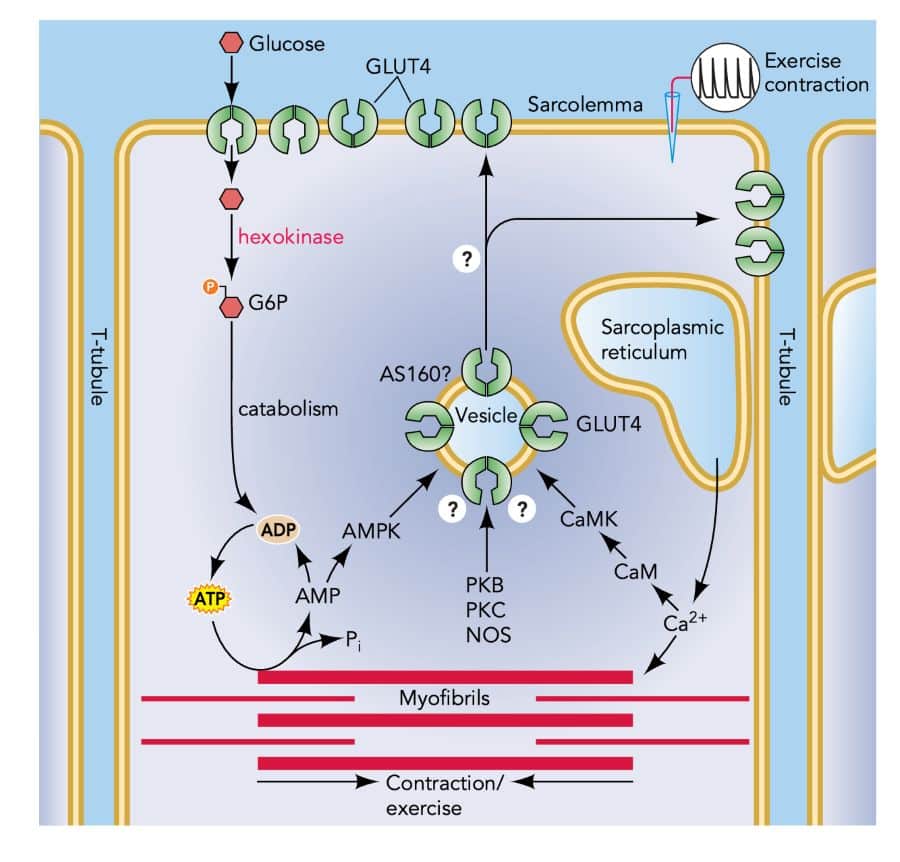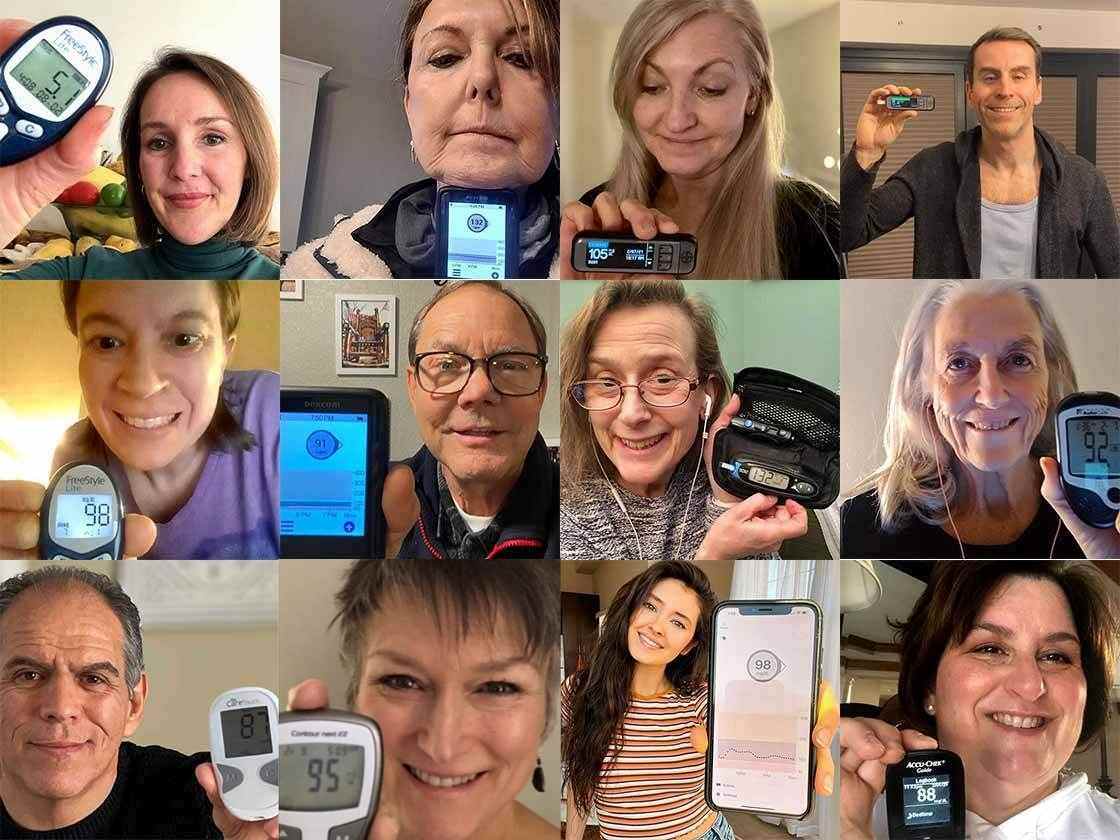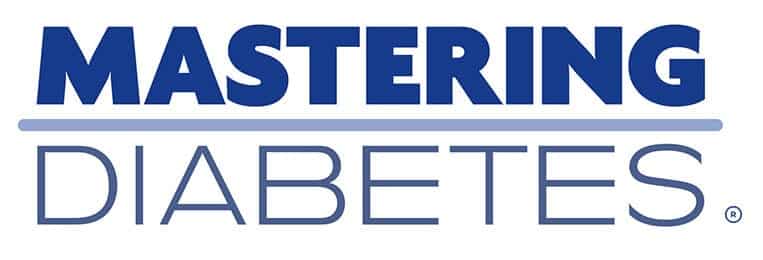Imagine being able to reduce the amount of insulin you need—while eating the same amount of carbs, or even more.
What if your body could manage blood sugar so efficiently, it feels like diabetes isn’t holding you back at all? It might sound unbelievable, but it’s real—and it’s all thanks to Zone 2 training.
In this blog post, we’ll share how zone 2 training can supercharge your insulin sensitivity and transform your health in ways you never thought possible, + some practical, easy-to-follow steps to help you get started right away.

What is Zone 2 Training?
Before we get into the good stuff: Let’s do a quick lingo check to make sure we’ve got the basics covered.
- Zone 2 training is moderate-intensity exercise where your heart rate is between 60-70% of your maximum; this is usually a pace where you can feel your heart working but you can still hold a conversation.
- Insulin sensitivity means how well your body’s cells respond to insulin, which is the hormone that helps move glucose from your blood into your cells to be used for energy. High insulin sensitivity means your cells easily take in glucose with less insulin, which keeps your blood sugar levels balanced and healthy.
- This applies to ALL forms of diabetes. Whether you have type 1, type 1.5, type 2, gestational diabetes, prediabetes, whether you take exogenous insulin or are on any type of medication or not, this information is relevant to you (and will radically change your health!)

Make Your Body More Efficient
Okay, so HOW would someone be able to take LESS insulin, while eating MORE carbohydrates, just from exercise alone?
Let me explain it like this. Imagine that you’re trying to get into a [Taylor Swift] concert. You’re waiting in line with thousands of people who are also trying to get into the stadium. You stand in line for a long time because there are only 3 doors through which you can get in, which is pretty inefficient. But if there were 10 doors through which you could get into the stadium, you’d get in much more quickly and efficiently.
Glucose transporters (GLUT 4) are like doors into the muscle cell. When you exercise at a zone 2 level, you add more doors, AKA glucose transporters, to the muscle, allowing more glucose to get in more quickly. This reduces the amount of glucose in the bloodstream, and therefore lowers the amount of insulin that your body needs.


Believe it or not, zone 2 training is the single most effective way to increase glucose transporters for muscle cells.² And even better yet, you get extra credit for whatever exercise you do. Studies have shown that even after you finish exercising, your muscle cells continue to have those extra doors and be more efficient in taking in glucose from the bloodstream.³,⁴ One study found that you can have literally DOUBLE the amount of GLUT 4 glucose doors, and that this effect can last hours and even up to two days after exercising.³ If you want to get the most bang for your buck, zone 2 exercise is hard to beat.
More Mitochondria = More Energy
One of the really cool things about the body is that neither disease nor healing happen in isolation. Just like an ecosystem in nature where one part effects the whole in a bunch of interactive ways, the same is true inside the human body. So at the same time that Zone 2 training is doubling the amount of doors for glucose to get into your cells, it also literally turns your body into a power plant.

Just like solar panels take the sun’s rays and turn it into energy we can use to charge our cell phones, mitochondria take the food you eat—especially glucose—and turn it into energy your body can use to do literally everything you do. Whether you are walking, talking, thinking, or having the best sex of your life, your mitochondria made it possible.
Zone 2 exercise increases the number of mitochondria that you have in your cells, AND the efficiency of those mitochondria. So you have more of the glucose version of solar panels, and they all work better, when you regularly do zone 2 exercise compared to when you don’t. This is another way that your body uses glucose more efficiently and effectively, which lets insulin take a break from doing all the work, AKA increasing your insulin sensitivity. Studies have shown that when you engage in exercise, especially zone 2 exercise, your mitochondria can increase the rate of energy production by more than 100x!!⁵
Help Your Body Burn Fat
Having better, stronger mitochondria doesn’t just improve the process of turning glucose into usable energy, it ALSO improves the process of turning fat into usable energy.
You might be thinking, “What does fat have to do with diabetes? Isn’t diabetes all about carbs?” Think again. Fat plays a significant role in diabetes and insulin sensitivity.

We have another video that dives deep into the role fat plays in creating a state of insulin resistance in the body. But for the purposes of this blog post, here’s what you need to know: Zone 2 training improves the body’s ability to burn fat. This leads to a reduction in visceral fat, which is the fat stored inside your body and around your internal organs. This is important because the more visceral fat you have, the less glucose your muscle cells can absorb.⁶ The less glucose your muscle cells can absorb, the more glucose is left in your bloodstream, aka high blood glucose or high blood sugar. So reducing visceral fat is very helpful for improving your insulin sensitivity.
Reduce Your Body’s Inflammation
Inflammation is a word that’s thrown around in the health world all the time, but most people don’t know what it actually means and why it’s harmful. So let’s address that.
Chronic inflammation is like a construction crew that never leaves. Rather than fixing the problem and heading home, the crew sticks around and keeps tearing things up, ultimately making things worse. This makes it very hard to drive the roads and get where you need to go – and glucose feels the same way when your body is chronically inflamed. Every part of the body needs to work harder in a state of inflammation.
Zone 2 training reduces inflammation, which increases insulin sensitivity⁷,⁸ because your body can use insulin more effectively because there are less construction crews blocking you and making a mess of things.
Zone 2 Training Gets to the Root Issue
Zone 2 training works because it addresses the ROOT causes of insulin resistance. It works from multiple angles helping your body to unblock what is causing the disease state inside your body, AND building the foundations of health that can SKYROCKET your insulin sensitivity. I’ve seen it happen in my own body, and in hundreds of our clients too.

3 Simple Steps to Get Started
Now, I know this is a lot of information, and you might be wondering how to get started with Zone 2 training. Don’t worry, I’ve got you covered. Let’s break it down into 3 simple steps that you can start today—even if you’ve never done it before.
- Find Your Zone 2 Heart Rate: Zone 2 training is all about working at the right intensity. To find your ideal Zone 2 heart rate range, you can start with a simple formula: subtract your age from 220, then multiply that number by 0.6 and 0.7 to find the lower and upper ends of your Zone 2 range. For example, if you're 40 years old, your Zone 2 range will be around 108-126 beats per minute. To stay in this zone, you can use a heart rate monitor or an app that tracks your heart rate in real time. Or you can simply exercise at a pace or intensity in which you are working hard but still able to carry a conversation.
- Pick an Activity You Enjoy: The great thing about Zone 2 training is that it doesn’t have to be complicated or overly strenuous. You can do activities you already like to do, like riding your bike at a comfortable pace, dancing, hiking, or playing pickleball. The key is to pick something that you can do for a sustained period without exhausting yourself. Remember, Zone 2 is all about consistency, so choose an activity that you can easily fit into your lifestyle. The important part is finding something you look forward to doing regularly.
- Start Small and Build Up Over Time: Zone 2 training is a long-term strategy, so there's no need to go all out from the start. In fact, starting small is better. We recommend that you start with the goal of 30 minutes of Zone 2 exercise, 3 times a week. For example, you could start with exercising on Monday, Wednesday, and Friday. As your endurance improves and you start to build the habit, you can gradually start going a little longer, like 45 minutes or an hour. Or add another day to your workout schedule. The key here is consistency. As your body adapts, you'll find it easier to stay in Zone 2 for longer periods, and your fitness and insulin sensitivity will continue to improve.

Give it a try and report back to us when you see your insulin sensitivity go through the roof.
Lower Your A1c and Get to Your Ideal Body Weight ... Guaranteed

Your results are guaranteed. Join more than 10,000 ecstatic members today
Personalized coaching puts you in immediate control of your diabetes health, helps you gain energy, improves your quality of life, and reduces or eliminates your meds.

